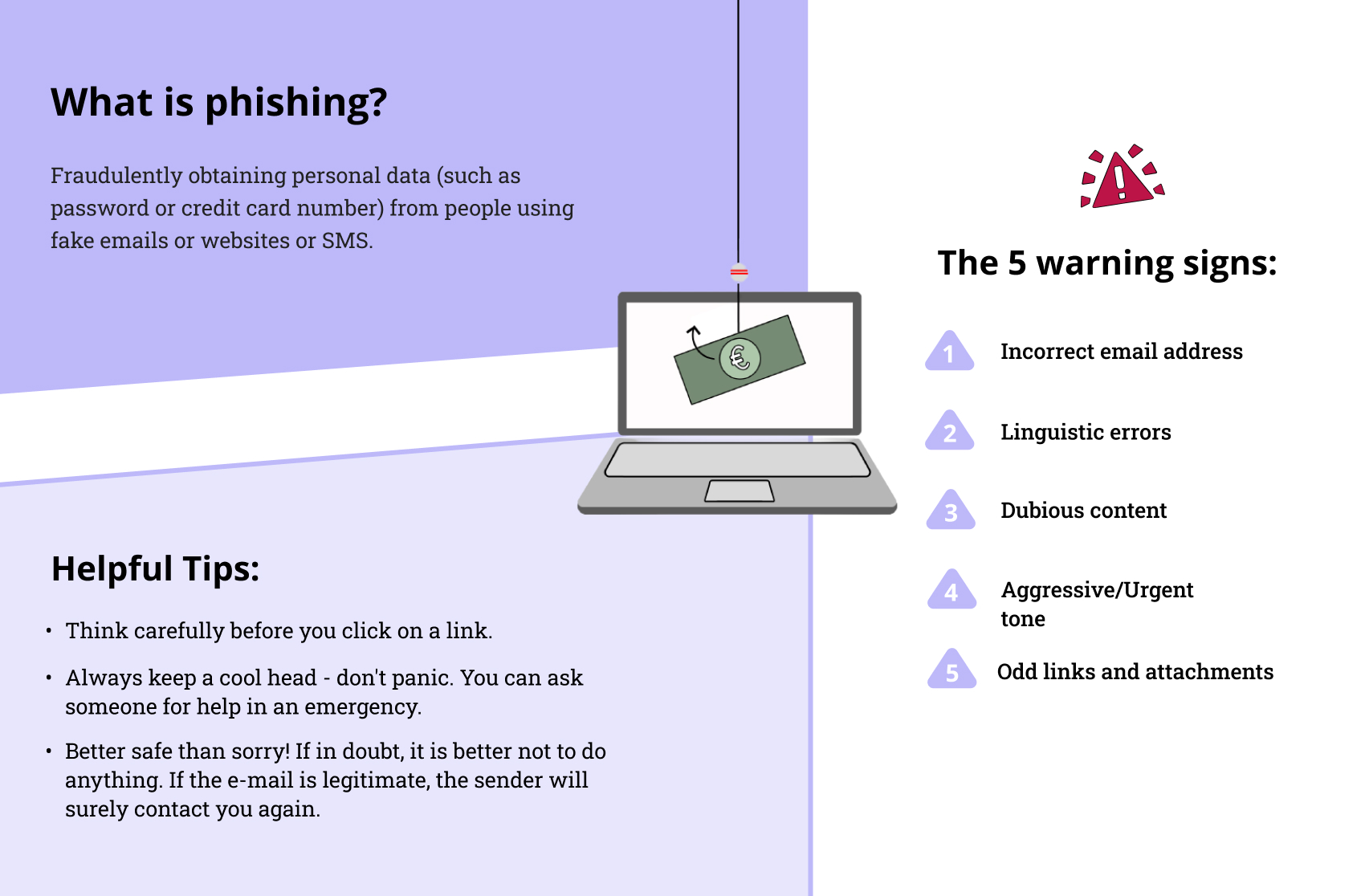Phishing

What is Phishing?
Phishing refers to the fraudulent acquisition of personal data by means of fake emails, websites or SMS. Personal data can be, for example, a password or a credit card number.
Phishing is one of the most widely used online scams. You are led to believe that the person sending the message is trustworthy, for example, someone from your bank or insurance company. In doing so, the scammer tries to trick you into taking a specific action to obtain your personal data. Phishing emails often look deceptively real and are difficult to distinguish from legitimate emails.
How to protect yourself from this?
As a rule, the following applies to all on the Internet: Keep calm and think twice about what you are doing. Especially when it comes to forwarding sensitive data (e.g. passwords or information about your bank account). If you have a closer look at phishing emails, you can often see mistakes. Spelling mistakes in the text or an incorrect salutation or greeting can be clues. Nowadays, however, phishing emails are sometimes very well written and almost error-free. Even if an email doesn’t have an obvious feature identifying it as a fake, it can still be fraudulent .
How to recognize a phishing email?
- The sender’s email address is incorrect or suspicious.
- The email contains grammatical errors or spelling mistakes.
- The content of the email is questionable. For example, you are asked to do something unfamiliar.
- The email calls for urgent action. For example, it is mentioned that an action has gone wrong and needs to be repeated.
- In most phishing emails, you are asked to open a link to a web address that does not match the sender listed. This can be checked by going to a page like whois.domaintools.com to see under which name this web address is registered.
Explanation video
Training tasks
[[ question ]]
[[ answer.value ]],
[[ explanation ]]
[[ answer.value ]],
[[ explanation ]]
Summary: Phishing

